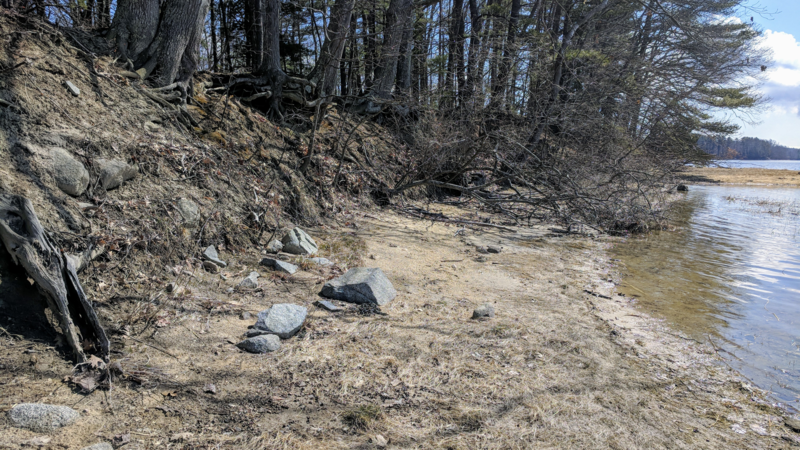Archaeologists Find Eroding Coastlines Threaten Past as Much as Present

The large stones seen here were once the foundation of a garrison house that stood in the early 17th century near Great Bay. Photo by Jason Moon for NHPR
New Hampshire’s Seacoast is home to some of the earliest history of European settlers anywhere in the country. Believe it or not, much of that history is still being uncovered.
But now climate change and sea-level rise is adding new urgency to those efforts.
NHPR’s Jason Moon joined a UNH researcher for a hike to see a centuries-old archaeological site that is literally washing away.
UNH anthropological archaeologist Meghan Howey has a map. It was made in 1635 and it shows the location of garrison houses that once stood near Great Bay in what is now Durham. Garrison houses, in case you’re wondering, were a sort of fortified log cabin built by early colonial settlers in New England.
But Howey says even though we’ve had this map for almost 400 years, until recently, no one has actually gone out to find the sites. To look for what may have been left behind.
